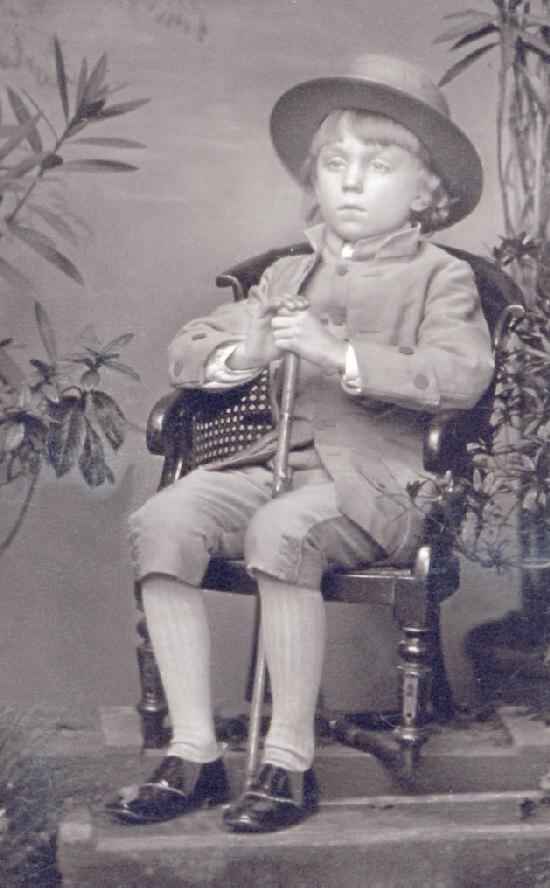 Figure 1.--This unidentified English boy appears to be wearing a very well-made 18th century costume. We think it could be described as a country squire. The portrait was probably taken in the 1890s. |

|
We have found quite a few images of English children wearing costumes. There are various occssions and events for which costumes are worn. We note eyhnic celebrations, fancy dress portraits, hoilidays, festivals, and parties.Fancy dress used to be very popular. Not only dressing up, but hving a pofrtrasit tken. We have noted many affluent English children wearing very elaborate costumes in the late-19th and early-20th century. These children often had very elaborate costumes. These costumes might be tailor made by steamstresses. The cost was not that important to a wealthy family. We have less information on costumes worn by the ordinary British boy, although costumes do often play roles in Just William, so we suspect that ther was some costume play--mostly home made costumes. Play used to involve war and cowboys and Indians, Roibin Hood was less popular. Children often had a range of cowboy or miiitary itenms. Modern mothers tend to dusciuragfe gthis. And children tend to hve less unsuopervised play time for such games.Dance is amoyther acivities involing costuming. This includes balet, ethnic and, modern dress. Irish and Scottish are the most commin ethnic dances. There are substantial Irish communities in the major cities. The English have Morris dancing, but few children participate. This is more popular with the girls thn boys, but some boys prticipate. There are many festivals in England celebrting historical events or times, Costumes often playt a role in these celebrations. England's long history offeres enormous posibilities for these festivals and celebrations. There are countless towns and villages that spoonor festivls of various sizes. Several holidays involve codstuming. One was Enpire Day but it is no longer celebrated. Anotyhrr celebrtion was May Day, but it is no longer celebrated like it used to be. English boys like to dress up in costumes for Guy Faukes Day. Guy Faukes Day is a week after Haloween. This is a relatively new celebratiom. It is not celebrted as much in England as in America. Haloween is, however, growing in popularity. It has become popular in the late-20th century, primarily as a result of the American influence. Presumbazbly the kids hzve lzched on to the idea that there is free candy (lollies) to be had. Schools often have costume ctivities, esocially pre-sdchools abd the yunger primry yetrs. Theatriucks are populsr in schools which of course envolve costuming.
Fancy dress used to be very popular. Not only dressing up, but hving a pofrtrasit tken. We have noted many affluent English children wearing very elaborate costumes in the late-19th and early-20th century. These children often had very elaborate costumes. These costumes might be tailor made by steamstresses. The cost was not that important to a wealthy family. Give the elborte costumes, tking poretrait was popiar foir both the adults and children.
There are many festivals in England celebrting historical events or times, Costumes often playt a role in these celebrations. England's long history offeres enormous posibilities for these festivals and celebrations. There are countless towns and villages that sponsor festivals of various sizes. Some are well known. Others are local events. These are particularly popular during the summer when people can enjoy outings in the nice weathr. Some are unusual involving some product for which the community is famous for or a noted event. Both hidoicsal evnts nd ecomomuic trditions re celebrted. Unfortuntely while we have found numerous images, often the particular festival or event is not noted. All we have are the costumes the children are wearing. The girls seem to take the costuming a little more seriously than the boys.
Several holidays involve codstuming. One was Enpire Day but it is no longer celebrated. Anotyhrr celebrtion was May Day, but it is no longer celebrated like it used to be. English boys like to dress up in costumes for Guy Faukes Day. Guy Faukes Day is a week after Haloween. This is a relatively new celebratiom. It is not celebrted as much in England as in America. Haloween is, however, growing in popularity. It has become popular in the late-20th century, primarily as a result of the American influence. Presumbazbly the kids hzve lzched on to the idea that there is free candy (lollies) to be had.
We note costume parties in England. We think that they were more for adults thasn chhildren, but we do not have a lot of information on this. We notice what seems to be a tradition in Salisbury. The Marchioness of Salisbury sponsored a children fancy dress ball at Hatfield House. This was a historic country house ner Salisbuy built by Robert Cecil, d Chief Minister and dpy master to King James I. There were adults and musicianins present, but there are a lot of children particrticuoting. The costumes invollved look elaborate and wiukd have been expensive. One boy in 1875s wore asailor suit like the princes, this would not have been expansive and probably what he normally wore. The other choildren wear great historical, elaborate costumes for the party. It was an imortnt ebough event to have an engrsving donr and reported in the London Iludtrated News (Jnuary 1875). We think his continud into th 20th cntury, but we do not think it is a tradiion that has survived to modern times..
Schools often have costume ctivities, esocially pre-sdchools abd the yunger primry yetrs. Theatriucks are populsr in schools which of course envolve costuming.
Navigate the Boys' Historical Clothing Web Site:
[Return to the Main country costume page]
[Introduction] [Activities][Art][Biographies][Chronology][Clothing styles][Countries][Theatricals]
[Bibliographies][Contributions][FAQs][Glossaries][Images][Links][Registration]
[Boys' Clothing Home]
